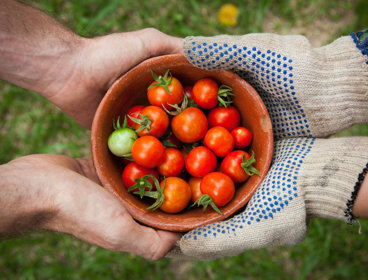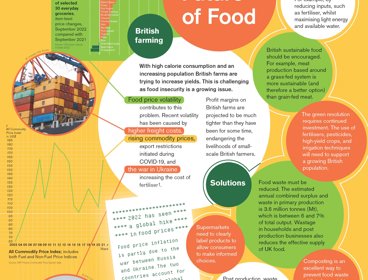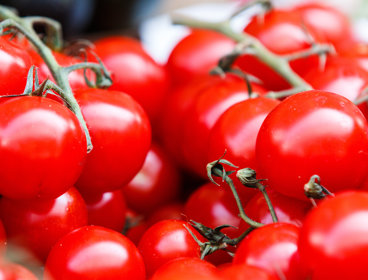Introduction
Increased demand for out-of-season produce in the UK has meant that it is now the third largest importer of fresh fruit and vegetables in Europe. In 2021, UK households purchased approximately £10.55 billion worth of fruit and vegetables, almost 50% of which were imported. Due to the nature of the goods, most fresh produce is transported from mainland Europe to the UK via ferry ports such as Dover in refrigerated lorries.
The impact of this is not only making the country more vulnerable to food insecurity, but also the carbon associated with food miles and storage has a wider effect on the environment.
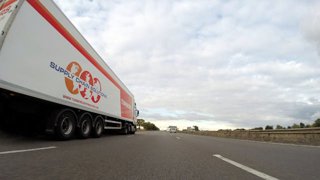
Although efforts are being made to raise awareness and encourage people to buy seasonal produce, the demand for food remains so high that additional sustainable solutions are needed. These solutions are important to help reduce the industry's impact on carbon emissions, as well as other environmental challenges like water stress, high energy use, and food insecurity caused by droughts.
One method that could be used is to harness the heat and emissions from waste production to not only grow produce all year round but also supply food to local communities and reduce food miles.
Projects of a similar nature have already been successful in countries such as the Netherlands and Canada but two proposed projects in the UK take this technology one step further in the bid to become world firsts or the largest in Europe.
Sustain Super-Midden, Wiltshire – a world first
Sustain Super-Midden is part of a bigger plan called Sustain Wiltshire, which aims to provide the local community with more sustainable ways to produce food, recycle waste, and generate heat and energy. This part of the project is still waiting for planning permission, but the goal is for it to be up and running by 2030.
The site is located about 2 miles northwest of Royal Wootton Bassett in Wiltshire. Its aim is to change how food is grown in the local area while also finding better ways to deal with waste.
The company leading the project already collects methane gas - instead of burning the waste, it is allowed to break down naturally from landfill and then is used to make electricity. During this process, carbon dioxide (CO₂) is also produced. The project plans to clean and pump this gas into inflatable greenhouses, rather than releasing into the atmosphere. The amount of CO2 released into the greenhouses can be controlled – with more CO2 aiding faster growth to meet demand.
The greenhouses are expected to grow enough fruit and vegetables to supply up to 80% of the local area’s needs, which will reduce food miles and give people fresher, locally grown produce. Extra electricity from the site could also be used to help power local businesses, lowering their energy costs and attracting new companies to the area.
Another part of the design is that the greenhouses will be portable. This means they can be moved so that the waste pits below can be emptied and reused. The greenhouses will also be built to keep out pests and diseases, making organic farming easier.
To improve the appearance of the site and support the environment, the project will also include landscaping around the greenhouses. This includes planting native trees, creating a lagoon, and building a reedbed to attract wildlife and increase biodiversity in the area.
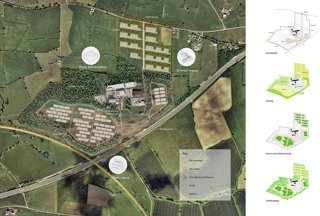
Rivenhall Greenhouse Project, Essex – the largest in Europe
The Rivenhall Greenhouse Project is planned for Bradwell in Essex and aims to become Europe’s largest low-carbon horticulture facility. This project will combine food production with waste management in a new and sustainable way.

The facility will use something called an integrated waste and food system. Household waste from all over Essex will be incinerated to produce steam, which will then be used to power turbines that generate electricity. The leftover steam will also be used to heat a 40-hectare greenhouse, allowing the site to grow up to 30,000 tonnes of tomatoes each year. This could supply around 6% of the UK’s tomato demand, helping reduce the need for imported food.
To enable food production all year round, the site will include 13 hectares of greenhouse space fitted with artificial lighting for winter growing . In addition, a former RAF hangar will be transformed into a vertical farm, where crops like leafy greens will be grown in stacked layers to save space and increase output.
The project offers several environmental benefits. By growing food locally, it will help reduce food miles and lower emissions from transport. Around 20,000 tonnes of carbon dioxide (CO₂) will also be captured each year from the incinerator's emissions and used to enhance plant growth in the greenhouses. However, it's important to note that this only captures less than 10% of the facility’s total CO₂ emissions based on typical emissions from similar scale waste facilities.
Overall, the Rivenhall project could become a model for how waste and food systems can work together to reduce environmental impacts and improve local food security.
Further reading
The 'world-first' plan to grow food above landfill, BBC July 16 2025

